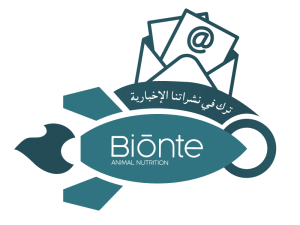Introduction
The development of mycotoxins may deteriorate the optimum animal condition and cause several economic losses (Bryden et al., 2012). Furthermore, swine represents one of the most sensitive species to mycotoxins. Actually, numerous negative effects have been described, such as liver damage, weakened immune system and failure in renal and reproductive functions (Dolenšek et al., 2021; Kanora et al., 2009).
Moreover, it is necessary to highlight that not all the production phases respond to mycotoxins in the same way (for example, piglets vs. boar). In sows, mycotoxins induce a decreased intake, alterations in piglet development, liver damage, gut dysfunction, and the disruption of antioxidant function and reproductive system (Danike et al., 2007; Liu et al., 2017).
The contamination of food by aflatoxins B1 (AFB1) leads to a reduction in growth rate and reproductive disorders in pregnant sows (Popescu et al., 2022). On the other hand, fumonisins (FB1+FB2) impair hepatic function and induce pulmonary edema (Haschek et al., 2001). In the case of zearalenone (ZEN) contamination, it has been described vaginal inflammation and reddening, breast inflammation, ovarian cysts, infertility, lethal embryo reabsorptions, vaginal prolapse and litter reduction (Liu y Applegate, 2020). Moreover, diarrhea, leucopenia and hemorrhagic symptoms are associated with T-2 mycotoxin intoxication, which is widely known in swine to induce food-toxic aleukia (Adhikari et al., 2017).
Nowadays, the most used strategy to counteract the damaging effects of mycotoxins is the use of detoxifying agents that permit the reduction in toxicity of these mycotoxins in animals. In BIŌNTE, we have developed one of the best products in the market when it comes to reducing mycotoxicosis due to its unique composition.
The priceless composition of BIŌNTE® QUIMITŌX® PLUS: Anti-mycotoxins soluction that permits the recovery of sows’ health.
BIŌNTE® QUIMITŌX® PLUS provides a triple action that includes adsorption, bioprotection and post-biotic effect, which is a great support for the species exposed to mycotoxins. Among its ingredients, it stands out some natural extracts and the combination of selected yeasts that reduce the incidence of typical secondary effects of the previously mentioned mycotoxins.
With the aim of improving the antioxidant status and the clinical reproductive parameters, BIŌNTE, in collaboration with the University of Thessaly (Greece), carried out two in vivo trials to evaluate BIŌNTE® QUIMITŌX® PLUS in sows, both a month before the birth and during the lactation. For this purpose, 80 primiparous sows (Large White x Landrace, DanBred) were randomly distributed in two treatments:
- T1-control group, fed with naturally contaminated diet with 2767,5 ppb FB1 y 700,5 ppb FB2, 14,6 ppb ZEN y 4,2 ppb T-2;
- T2-experimental group, fed with naturally contaminated diet and the addition of 1,5 kg/t of BIŌNTE® QUIMITŌX® PLUS (Figure 1).

Figure 1. Experimental design of the two trials.
During the trial, samplings were performed to study the oxidative status in the animals by the analysis of biomarkers, such as thiobarbituric acid reactive substances (TBARS), protein carbonyls (CARBs) and total antioxidant capacity (TAC). Likewise, it was performed clinical evaluations of the mammary gland and the litter characteristics.
BIŌNTE® QUIMITŌX® PLUS improves the antioxidant function and the reproductive parameters of sows exposed to mycotoxins
BIŌNTE® QUIMITŌX® PLUS improved the antioxidant function, so much so that the sows showed a reduction in TBARS and CARBS levels by 34,5 and 38.8% respectively (Figure 2). Additionally, the total antioxidant capacity increased by

Figure 2. Antioxidant function (µmol/L) in primiparous sows exposed to the mycotoxin’s multi-contamination in the two analyzed farms.
The monitoring of the clinical and reproductive parameters of sows is the key factor to prevent and control diseases and guarantee the optimum conditions of piglets’ breeding. Hence, it was analyzed the characteristics of levels of formation, consistency, nodules, pain and the 24h-after-birth rectal temperature.
These parameters were evaluated by using the following scoring system: 24h-after-birth rectal temperature (0 = normal, up to 40 °C; 1 = > 41°C; 2 = > 42 °C); nodules (0 = normal, up to 40 °C; 1 = > 41°C; 2 = > 42 °C); pain (0 = absent; 1 = mild; 2 = severe); consistency (0 = loose; 1 = elastic; 2 = firm); form/regression (0 = in lactation; 1 = poor form/regression; 2 = no form/no milk production).
As shown in Figure 3, BIŌNTE® QUIMITŌX® PLUS improved the mammary gland condition compared to control animals. Also, when the anti-mycotoxins product was added to the diet, the rectal temperature was normal 24h after birth, nodules were not observed in the mammary parenchyma, nor the subcutis and pain and consistency were reduced compared to the control animals.

Figure 3. Clinical observations of the mammary glands in primiparous sows.
Lastly, it is necessary to highlight that the supplementation with BIŌNTE® QUIMITŌX® PLUS improves the reproductive efficiency of sows exposed to multiple contamination by mycotoxins by reducing the total number of stillbirths and mummies per litter (43-59%) and by increasing the number of live born piglets and weaners per litter (16-21%) (Figure 4).

Figure 4. Characteristics of the litter.
Overall, these results, which are published in full version in the prestigious open-access journal Toxins (https://doi.org/10.3390/toxins15090580), demonstrated the efficiency of BIŌNTE® QUIMITŌX® PLUS.
Conclusion
In summary, the incorporation of BIŌNTE® QUIMITŌX® PLUS in diets that are naturally contaminated by mycotoxins in primiparous sows helps to achieve optimal reproductive performance and improves its antioxidant status. BIŌNTE® QUIMITŌX® PLUS is positioned, once again, among these products developed to provide a real benefit to livestock animals.



